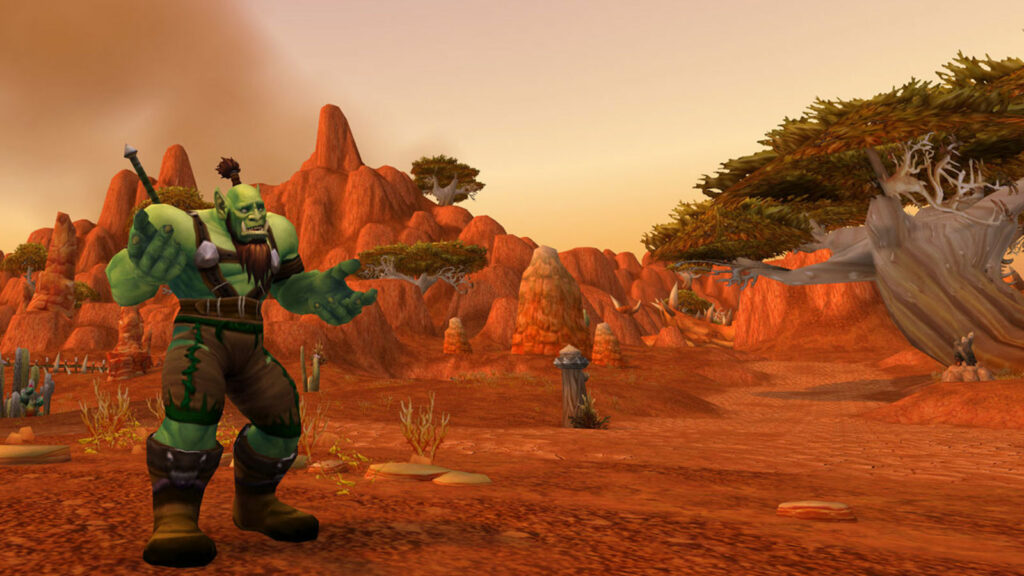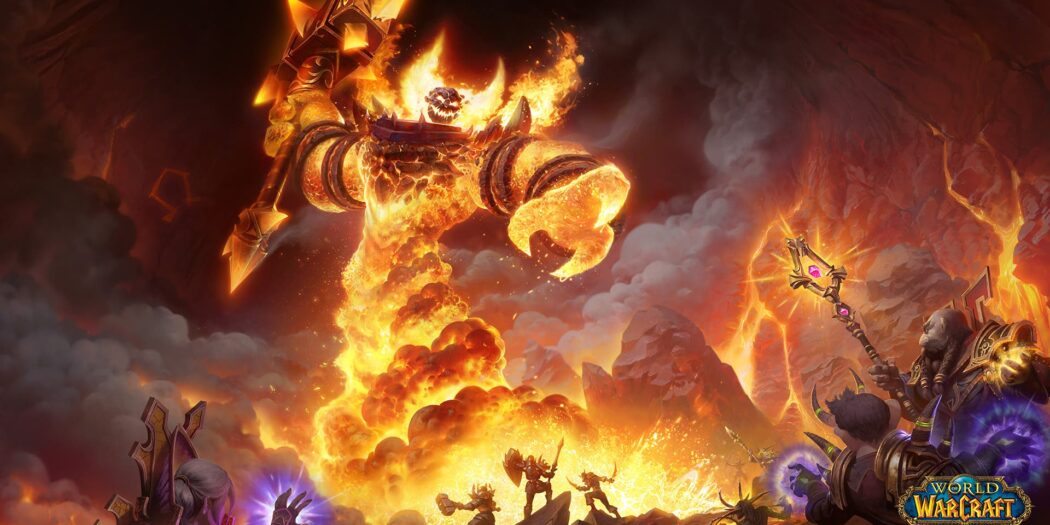The technology that once saved World of Warcraft a decade ago is now causing issues for Classic’s Season of Discovery, according to Tom Ellis, Senior Game Producer.
The current server infrastructure for Season of Discovery relies on Layers, which are intended to distribute the server load. The preferred situation is for the layer system to allocate players to areas with an even player distribution during major PvP events like The Blood Moon.
But the reality is, that lots of players are having problems with layering during the PvP event in Stranglethorn Vale.
Blizzard Developer Tom Ellis took to Twitter to provide insights into the history of Sharding, Layering, and discussed ongoing efforts to address the problems associated with layering.
“So, in what we call Mainline (modern game, latest expansion) we use tech called Sharding ever since Warlord of Draenor. Once upon a time, a realm ran one copy of each zone locally on it’s own hardware, if you ran after someone and they crossed into another zone, you followed them, it was all running in the same place, you could kite mobs across zones, escort quests had NPCs pathing across zone boundaries.” Ellis started his history lesson.
“Problem, as hardware improved and performance improvements were made, expansion after expansion we raised the cap on the number of concurrent players we allowed logged in. If everyone wants to play on Tich, and we have the technical capacity to lower queue times, why wouldn’t you? Ah, but the realm still only ran one copy of the world, eventually the realm has so many people on it that if even a small percentage of them congregate in the same place its going to be way more than the CPU core that’s running that zone can handle, in comes the lag, you can multithread to your hearts content, eventually you’re going to have a single thread bottleneck that will limit what you can do.”
There was a big issue when the CPU cores couldn’t handle the high demand, especially during the successful launch of Warlords of Draenor. The starting zones in Warlords of Dreanor just couldn’t handle the load. Ellis shares that a former Blizzard developer, in a period of “three days and nights” came up with what we now know as Sharding technology. When World of Warcraft Legion was released, Sharding evolved into a fully realized feature and each zone could support numerous copies. “It made the game feel less cohesive, but it meant the realm cap and zone capacity were now disconnected entirely, it also gave us the ability to have specific values for specific zones (not all zones are equal in terms of CPU cost).”
Players really, really liked World of Warcraft Classic.
In the Classic launch, Blizzard aimed for No Changes to keep it like the original, so the Sharding technology was ruled out, anticipating a big but short-lived launch: “There was also the strong belief that launch was going to be big (but no where near as big as it turned out ;)) and interest would drop off fairly quickly as people got their nostalgia hit and moved on”.

To avoid small realms turning empty, Blizzard needed modern-sized caps without overcrowding. Technical problems like Sharding, mob movement and PvP dynamics, were tricky and costly to fix. Layers were meant to be temporary, but due to the sustained popularity of Classic, Blizzard had a problem: “You really, really liked Classic. The servers still had tons of players on, so fulfilling this promise was tough and it was only towards the very end of Classic we were able to run single-layer, and even then, that was a very spicy Layer”. Starting from The Burning Crusade onward, layering became a permanent solution as realms grew larger, making the idea of single-layering impractical.
Layering was meant for a semi-permanent world, but players turned it into a strategy. The game evolved with layers becoming a key part of Classic’s dynamics and gameplay.
Ellis also says that Layering is more structured than Sharding. In Season of Discovery, layers are now dynamically created based on player load but collapse as numbers decrease. This change aims to ensure consistent population, meeting player desires for constant interaction: While mostly successful, there are some issues to refine, such as multiple movements and group splits: “That change has been *mostly* successful, it does have some behavior we’d like to change (moving you multiple times, potentially splitting up groups etc). But as a result you’re now seeing yourselves “layering” more often, normally this was an opt-in thing, if you join a party with someone on another layer you expect to move, now for the first time in Classic you could be moved randomly without warning.”
The main layering issue in Season of Discovery.
The main issue with layering lies in early code assumptions, particularly the uniform player capacity for all zones within a layer. This becomes problematic as different zones have varying player activities affecting CPU usage. Additionally, layering is expensive, leading to multiple empty copies of zones spinning up for specific events: “So right now, world PvP and layering is proving problematic and hard to balance. As always, we’re working on it and good things will come. Come Monday we’re going to diving into reports of people getting split up when they were already on a Layer together (that’s not expected, layering should occur on party changes only) and Classic team already mentioned they’re working on a change to keep parties together in the event of a layer change due to excessive load.”
In a new post on X, Ellis talks more about the problems in Season of Discovery but keeps it short for those who are more in a hurry:
“The TL;DR? Groups are hard for the layering system to handle, and once a zone is full the UX at that point is gross. As the Classic team already mentioned theirs changes coming to help improve that, and my end I’ve been noodling the Target & Max values to try and find the sweet spot between Lag and Groups.”
Layering Part 2: Design & Engineering Clash!
Dramatic title, not actually any conflict here. So what’s the deal with the increase in grumbling around layering in Season of Discovery. Because we’ve not actually changed anything, Classic, TBC and Wrath all ran the same tech.
The…
— Tom Ellis (@knowyourgoat) February 18, 2024
 Battlechat Blizzard, Destiny 2 and Starfield News, Reviews, Videos & Guides
Battlechat Blizzard, Destiny 2 and Starfield News, Reviews, Videos & Guides


